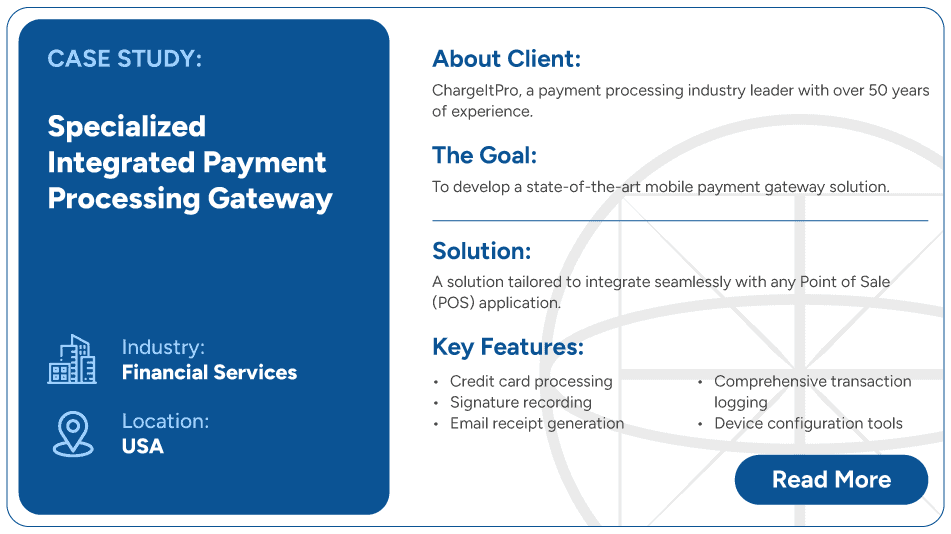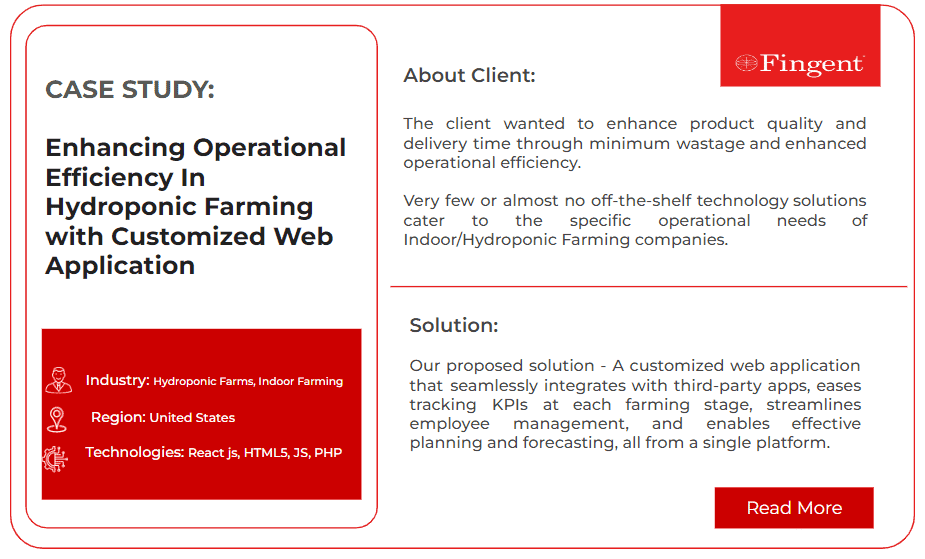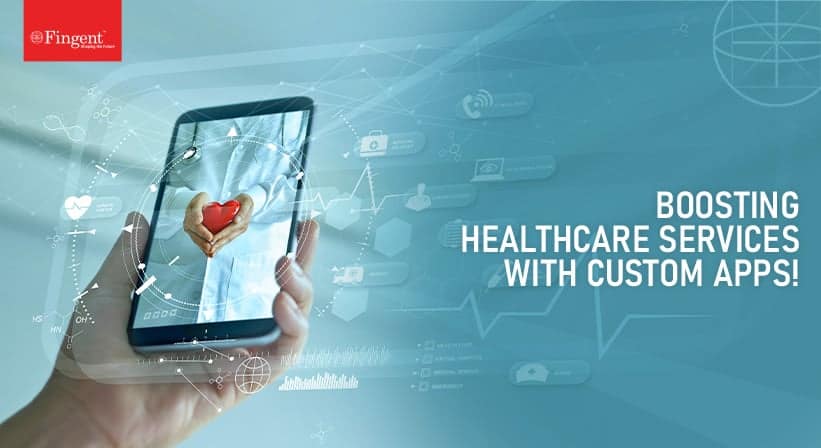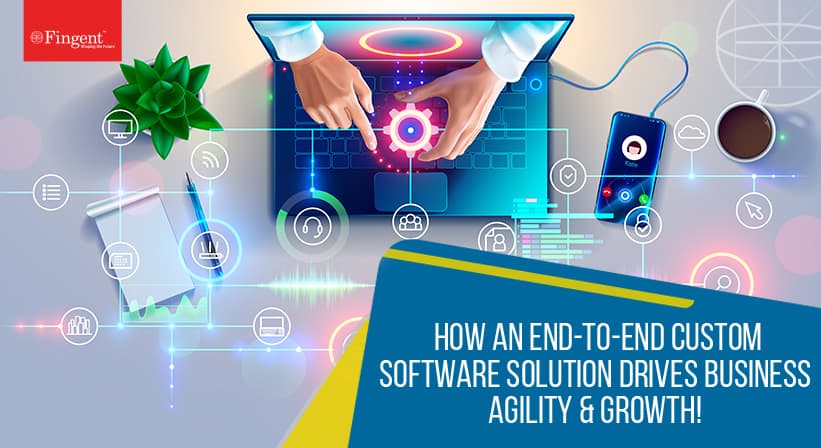
Tag: custom software development
Wine and wisdom get better with age. But software doesn’t. That’s why experts say legacy software modernization is inevitable for modern businesses.
Picture this! Ten years ago, you might have owned a PC running Windows XP. But today, your new computer runs Windows 11. The latest OS makes your current PC more powerful and capable than the one you owned ten years ago. Likewise, your business is no longer the same as it used to be when you started it. Using legacy, underperforming software to manage your business can stall its growth. So, how can you make your business software robust and relevant? Thanks to legacy software modernization services for making your applications relevant and competitive.
This article explores why you need to invest in application modernization.
Don’t Allow Outdated Technology To Sloth Your Business Growth
Can Clinging To Outdated Technology Cost High For Your Business?
Yes! Holding on to outdated technology can cost your business more than it saves. These real-world examples prove the damaging effects of legacy software on businesses.
The Rise and Fall of Blackberry
The tale of Blackberry is a classic example that reveals the pitfalls of legacy software.
What was once a leader in the smartphone market lost ground to rival operating systems—iOS and Android. And the reason? Failure to innovate and reluctance to get rid of legacy system elements.
In 2011, Blackberry made a revenue of $20 billion. Fast forward to 2022, the figures dropped to $718 million. The same year, Blackberry decommissioned the infrastructure and services used by their legacy software and phone operating systems.
Myspace, The Lost Space
The story of Myspace is no different from that of Blackberry. Launched in 2003, Myspace was the first social network to reach a global audience in the pre-Facebook era.
Post-2007, Myspace started losing millions of users to its rising rival, Facebook. The most cited reasons behind Myspace’s failure are lack of usability and flexibility, low innovation, and slow load times.
Delta: Back-to-Back IT Outages
In August 2016, Delta Airlines suffered a loss of $150 million due to an outdated reservation system. Built in the 1960s, the system underwent a major crash caused by a power failure. The incident forced Delta to delay or ground most of its flights for at least six hours worldwide.
How can one forget the recent CrowdStrike outage that disrupted Delta’s operations worldwide? The incident affected Delta’s crew-tracking software, forcing them to cancel over 7,000 flights over five days. According to a CNBC report, the five-day outage cost the airline nearly $500 million.
How Does Legacy Software and Technology Impact Your Business?
Here are a few ways outdated applications affect your business’s performance and growth.
1. Lack of Interoperability
Legacy applications struggle to integrate and communicate with each other. Poor interoperability can hamper your progress. It can also slow down the adoption of more efficient processes.
2. Security Vulnerabilities
Outdated security measures and lack of updates can make legacy apps more susceptible to cyber threats.
3. Outdated Technology
Legacy applications often rely on outdated technology. Obsolete technology can make them incompatible with modern standards and best practices.
4. Limited Scalability
Scaling legacy applications to accommodate evolving demands can be challenging and expensive.
5. High Maintenance Costs
Legacy applications demand extensive resources and maintenance. This can result in escalating costs over time.
6. Inefficient Performance
Outdated software code and technology can mar the performance of legacy applications. This can hinder productivity, resulting in knowledge silos and slow response times.
7. Poor User Experience
Legacy applications fail to provide the Uber-like, personalized experience that today’s customers seek.
8. Operational Disruptions and Delays
Finding the right talent to track, maintain, and support legacy applications is arduous. This can lead to operational disruptions and delays in resolving critical issues.
Legacy Application Modernization: Excerpts From A CTO
How Can Businesses Solve the Risks of Legacy Software?
We’ve seen the risks legacy apps can expose your business to. That said, what’s the right approach to solve them?
Enter legacy software modernization—a process that allows you to upgrade or transform outdated, inefficient software systems into more contemporary, efficient, and adaptable solutions.
In a recent survey, RedHat highlights the primary benefits of application modernization. With legacy software modernization services, more than 50% of companies have achieved:
- Improved security (58%)
- Greater scalability (53%)
- Enhanced reliability (52%)
These findings show the potential value that application modernization can bring to companies.
Why Is Legacy Software Modernization the Way Ahead for Businesses?
Sticking to legacy technology will undermine your future projects and growth plans.
According to McKinsey, 70% of business transformation’s impact depends on technology. If the technology you use is old and obsolete, your entire IT budget will be spent maintaining legacy applications and infrastructure.
91% of customers consider ending relationships with companies that use obsolete software technologies.
The message is clear. Companies need to modernize if they want to remain competitive.
How Does Legacy Software Modernization Benefit Your Business?
In 2022, IDC predicted that most legacy applications would be updated by 2024. 65% of the applications will use cloud services to extend functionality or replace inefficient code.
Modernizing legacy apps will make them more secure, flexible, and scalable. Here are some of the top benefits of legacy app modernization:
1. Enhanced Customer Experience
Modernized applications offer new features, improved performance, and reliability. With a revamped UI and UX, modernization enhances customer experience and satisfaction.
2. Improved Employee Experience
Modernized applications boost employee productivity and collaboration. They help employees do their jobs faster while saving productivity. Features like automation and analytics allow employees to focus on more strategic initiatives. It helps reduce the risk of employee burnout and boost workplace morale.
3. Streamlined Data Management and Governance
Modernized applications improve data management and governance efficiency within your organization. It helps ensure the quality, consistency, security, and usability of your data.
4. Cost Reduction
Modernized applications drive operational efficiency, cut unnecessary maintenance costs, and boost employee productivity. All these lead to tremendous cost savings in the long run.
5. Increased Agility
Modernized applications allow businesses to be more agile and responsive to change. Contemporary applications help you adapt quickly to evolving market trends and needs. Restructuring and refactoring legacy software will make it more maintainable and adaptable.
6. Improved Cybersecurity and Compliance
Modernized applications incorporate the latest security standards and technologies. This will help safeguard your data against unwarranted access, cyber-attacks, and theft.
Ensuring compliance with industry standards is an integral component of application modernization. It helps avoid costly compliance issues. With app modernization, you can also reduce the risk of security breaches.
7. Hybrid IT—Best of Both Worlds
Modernization combines the preservation of critical components with functionality enhancement. Today, hybrid IT is a principal cloud strategy pursued by many companies. Hybrid IT brings to your table the best of both worlds. It blends the security and control of an on-premises environment with the flexibility and scalability of cloud services.
Enterprise Application Modernization Trends and Best Practices To Look Out For
Busting the Common Myths About Legacy Software Modernization
# Myth 1: Modernization Is Expensive
Studies reveal that successful modernization boosts annual revenue by 14% and can lower application maintenance and running costs by 30% to 50%.
You can prioritize your modernization strategy to control costs and complexity. For example, a smart application rewrite can be more effective than building a new application from scratch.
# Myth 2: Modernization Requires a Strong Internal IT Team
Hiring in-house staff with in-depth technical knowledge consumes your budget and time.
Engage with an external software vendor to handle your IT backlogs. An outsourcing partner can reduce your dependency on strong in-house IT teams. They provide you with the right mix of talent and technology to transform your legacy applications. Besides, you can save a lot on in-house hiring and maintenance.
# Myth 3: Modernization Will Disrupt My Business
Fear of operational disruptions forces many businesses to opt out of modernization.
Not all modernization scenarios need a platform switch. Usually, a wrapping approach is possible instead of a replacement strategy. Wrapping can be done in two ways:
- Adding a layer of API on top of the Service Oriented Architecture (SOA) in the legacy system. This will enable the legacy application with new capabilities. There is no need to install any special infrastructure.
- Another way is to connect an API directly with the back-end legacy system. It will give each system a separate wrapper. It avoids the need to integrate local service data with other services.
Today, custom software development vendors use RESTful APIs across many application modernization requirements. This way, newer functionalities can be enabled by migrating just the applications.
# Myth 4: If It’s Not Broke, Why Fix It?
Many businesses are complacent with the status quo. After all, why even touch something that works, right? Well, not exactly.
Risk can creep out from just about anywhere. Outdated security protocols, compatibility issues, evolving regulations—several aspects pose hidden costs or threats to your competitiveness.
Modernizing legacy applications is essential to cover your bases. Legacy software modernization is a critical hinge on which your business’s survival depends. It makes your business more resilient in the face of uncertainty.
# Myth 5: Modernization Involves Rigorous Planning and Complications
Building a modernization strategy requires a significant time investment. Modernizing without a priority can drive up costs and complexity.
Assessing the full scope of your organization’s needs upfront pays off in the long run. Take time to analyze the trade-offs between business and technology. Prioritize your needs and features. Find out what can enable a smooth modernization journey. Partner with a trusted custom software development company to execute your app modernization project.
How Can Companies Get Started With Legacy Software Modernization?
Here are four steps to begin your legacy application modernization journey:
1. Assess the Business Need to Modernize
Find out what is driving the need for modernization. Identify the opportunities that modernization will offer your business.
2. Choose Specific Modernization Efforts
Analyze the modernization efforts needed to meet your defined business goals. Map specific business outcomes and defined patterns of activity. Select a provider that can deliver the essential services.
3. Create a Modernization Roadmap
Identify the timeline for each phase of modernization. Ensure the journey in each phase adds incremental value while ensuring business continuity.
4. Make the Essential Changes to Adapt
Make necessary changes to your data structure and governance policies. Adapt your culture, skillset, and organizational requirements to benefit from the new workflows and resources.
Strategize Your Legacy Software Modernization Journey With Experts
How Can Fingent Help You With Legacy Software Modernization?
Right consulting support can make a real difference in legacy application modernization services. How does modernizing legacy apps with Fingent help you?
We help customize and integrate the best hybrid solution for your circumstances. Our team brings in:
- Deep cloud expertise
- Relevant skill sets for app modernization
- Logical integration of multiple business applications
- Excellence in the latest technologies
- Strategic vision and support
- Industry and domain expertise
- Customization to suit your specific needs
Gain fast solutions and low-cost implementation with our legacy software modernization services. Address your key constraints and modernize your application portfolios with Fingent. Contact us to know more.
Stay up to date on what's new

Featured Blogs
Stay up to date on
what's new



Talk To Our Experts
How can a custom payment processing solution change your business?
The benefits are many: streamlined payment processes, safe transactions, easy fraud detection, and better customer experience. However, you might wonder why choose a customized solution when ready-made software can easily fetch these advantages. Tailor-built applications can do more! They offer seamless integrations, personalization, scalability, and distinct solutions that cater to your unique business needs.
In this five-minute read, you’ll find more about why you implement a custom payment processing solution for your business!
What Business Challenges Do Payment Processing Systems Alleviate?
1. Late Payments
Late payments pose a persistent challenge for enterprises. They puncture cash flows and strain client relationships. Custom payment processing solutions tackle this issue. Automated invoicing, recurring billing, and payment reminders help ensure timely payments. Streamlining payment collection enhances cash flow management, mitigating delays and improving financial planning.
2. Manual Mishaps
Manual glitches in payment processing are a hassle. They can brood discrepancies in financial logs and regulatory tangles. Custom solutions harness automation to excise manual data input. This helps in seamlessly integrating with accounting frameworks and ERP software. This, in turn, ensures precision and uniformity in financial dealings. It also economizes time and resources while enhancing accuracy.
3. Security Concerns
Security is crucial when handling payments. With cyber-attacks increasing each year, protecting payment information is critical. Customized solutions enable security measures like tokenization, encryption, and following PCI compliance rules. These protections help keep payment data safe during transactions. They also reduce the risk of fraud or identity theft, which makes customers feel more confident about using the service.
4. Lack of Integration
Fusing payment processing systems with existing infrastructure poses a puzzler for enterprises. Customized solutions are architected to blend seamlessly with various business systems, including CRM platforms and e-commerce portals. This amalgamation streamlines operations, heightens visibility, and enhances decision-making processes.
A Unified Self-service Customer Portal Transforming Payment Experience
What Are the Top Benefits of Payment Processing Solutions?
Let’s now unveil the metamorphic might of payment processing solutions. More importantly, see their potential to revolutionize enterprise financial functions.
1. Cash Flow Augmentation
Efficient payment processing bolsters cash flow by automating invoicing, payment collection, and reconciliation. Timely payments ensure a steady fund inflow. This is important in meeting fiscal commitments, investing, and sustaining liquidity.
2. Security Supremacy
Payment processing solutions ensure robust security, including encryption, fraud detection, and safeguarding sensitive data. Adherence to standards like PCI DSS fosters trust among customers and stakeholders.
3. Client Contentment
Frictionless payment encounters amplify client satisfaction and allegiance. Various payment alternatives, secure checkouts, and instantaneous confirmations ensure this. They truncate friction and amplify repeat transactions.
4. Reporting and Analytics
Access to real-time data and analytics catalyzes informed decision-making. Insights into transaction volumes, trends, and consumer conduct empower enterprises. They can pinpoint growth prospects and fine-tune strategies.
Why Choose Custom Over Off-the-Shelf?
Businesses frequently grapple with the choice between off-the-shelf and custom payment processing solutions. Granted, off-the-shelf options provide convenience and cost-effectiveness. However, they may fall short of meeting unique organizational needs. In contrast, custom solutions are crafted to fit specific requirements, offering unmatched advantages.
Custom payment processing solutions allow for flexibility and scalability. They empower enterprises to adapt and evolve in the face of fluctuating market dynamics and consumer demands.
Custom solutions provide unmatched flexibility to accommodate singular business processes and demands. They employ personalized workflows, user interfaces, and integrations with extant systems and third-party applications. Custom solutions harmonize these tools with organizational aspirations and priorities. This optimizes efficiency, augments productivity, and catalyzes innovation across the payment realm.
Limitations of Off-the-Shelf Solutions
Off-the-shelf solutions may seem like a quick and cost-effective way to get started, but they often come with limitations, especially in terms of functionality, customization options, and scalability. Businesses may find themselves constrained by rigid workflows and limited integration capabilities. Support for specialized payment methods or industry-specific requirements isn’t provided, either. Reliance on third-party vendors for updates, upkeep, and support can be a hassle. It can engender dependency dilemmas and potential hiccups in business operations.
On the other hand, custom payment processing solutions remove this element. They offer greater sway, flexibility, and ownership over the payment setting. They help enterprises optimize processes, strategically innovate, and stay ahead of the curve.
Deliver Top-Notch Banking Experiences to Your Customers!
How Do I Strategize A Custom Payment Processing Solution?
Let’s explore the strategic blueprint behind crafting custom payment processing solutions. Also, take a look at how they cater to unique business requirements:
1. Understanding Business Requirements
Businesses must first grasp their specific needs and objectives. A thorough analysis of current processes, pain points, and future goals is key. A deep understanding of business requirements is essential here. Whether its optimizing invoice management, enhancing security protocols, or integrating with existing systems.
2. Scalability and Flexibility
In today’s dynamic business landscape, scalability and flexibility are crucial. This holds true in a custom payment processing solution as well. Priorities are accommodating increasing transaction volumes, expanding product lines, and evolving business models. Adopting scalable architecture and flexible design principles can future-proof the payment processing ecosystem.
3. Compliance and Security
Compliance and security are paramount in financial transactions. A custom payment processing solution should adhere to regulatory requirements, including PCI DSS, GDPR, and industry-specific standards. Robust security measures such as encryption and multi-factor authentication are vital. They safeguard sensitive payment data and mitigate the risk of fraud and data breaches.
4. User Experience
User experience (UX) is critical for the success of any payment processing system. A seamless and intuitive user interface is important. This, coupled with streamlined workflows and clear communication, enhances usability and efficiency. Prioritizing UX can help in many ways. Organizations can improve adoption rates, reduce user errors, and enhance customer satisfaction.
How Can Fingent Help?
Fingent specializes in crafting custom software solutions. This includes personalized payment processing systems tailored to our client’s unique requirements. We have extensive experience in the field. Streamlining payment operations, bolstering security, and fostering business growth are our forte.
Our approach starts with a deep dive into our clients’ needs, objectives, and challenges. We work closely with stakeholders to get the complete picture. We gather insights, pinpoint pain points, and establish success metrics. Experts are handpicked, drawing on our technical expertise and industry knowledge. We then design and develop bespoke solutions that precisely address our clients’ needs. Consider this case study:
These features enable effortless payment experiences for customers, ensuring security and reliability. This collaboration exemplifies Fingent’s commitment to delivering innovative custom software solutions. Our strength is in tailoring these solutions to meet the unique needs of our customers.
Get Custom, Get Smart!
Payment processing systems tackle vital business challenges like late payments and manual errors. This is achieved through customized solutions for improved cash flow and enhanced security. Strategic planning and choosing the right partner are key.
Leverage Fingent’s expertise! Transform your payment processes and unlock new opportunities for success. See how our custom software solutions can empower your organization to thrive in the digital economy. Contact us today.
Stay up to date on what's new

Featured Blogs
Stay up to date on
what's new



Talk To Our Experts
The world of technology is evolving at a fast pace, with newly emerging advanced applications almost every day. With the significant growth of technology, we can also witness the transition of companies from legacy systems to modern systems. That is what gives your business true agility.
Application modernization assists companies in eliminating needless operating costs, lowering capital expenditures, and freeing up workers to pursue new initiatives and revenue-generating plans. In this article, we will look at what modernizing your system application looks like and how it can benefit your company’s growth and success.
“In Today’s era of volatility, there is no other way but to re-invent. The only sustainable advantage you can have over others is agility, that’s it. Because nothing else is sustainable, everything else you create, somebody else will replicate.” — Jeff Bezos, Founder, Amazon.
What Is Application Modernization?
In simple words, it is the practice of updating old software systems, also known as legacy systems, in order to retain the memory data but still benefit from the new framework. It is like renovating a house. Rather than discarding the older system, we can give it a good remodel and enhance its efficiency.
The global application modernization services market was valued at USD 11838.15 million in 2021 and is predicted to grow at a CAGR of 14.31% over the forecast period, reaching USD 26405.06 million by 2027. For many businesses, this entails re-programming existing legacy workloads onto current cloud-based platforms or splitting monolithic software into smaller components, such as microservices, and then programming these microservices.
Why Has It Become Essential?
The main and most obvious reason for application modernization is to enhance efficiency, which will in turn give the company a better stand in this immensely competitive industry. Modernizing apps may help businesses take advantage of new technology and streamline processes among other things.
Remember that there is an unseen cost in trying to make do with legacy software. Outdated software can reduce productivity, stifle expansion, and degrade the customer experience. On the other hand, a strong application modernization plan will also lower the resources needed to run an application, enhance the frequency and dependability of deployments, and improve uptime and resilience.
Top Benefits
Listed below are the top benefits you can experience by modernizing your system software:
1. Improved efficiency
Modernizing applications enables organizations to simplify processes, minimize layoffs, and automate repetitive procedures, resulting in higher productivity and resource utilization. App modernization also helps to maintain a variety of existing procedures, ensuring company continuity. According to IBM, upgrading legacy systems can increase developer productivity by up to 40%.
2. Cost benefits
You will cut expenses, improve dependability, and boost consumer confidence, and also position your organization to seize new possibilities faster. According to Intel, recent research found that when organizations lower their technical debt load by updating their legacy app portfolio, they get immediate savings of 32% of their IT expenditure.
3. Scalability
Modernized applications are often built to be more scalable, making it simpler to handle growing workloads and respond to changes in user demand. This is critical for businesses as they expand and need to support a larger user base or more sophisticated processes.
4. Flexibility
The flexibility of a business goes hand-in-hand with its ability to scale from smaller user bases to larger user bases. It can also be seen from the perspective that with advanced technology as your backbone, your company is more flexible to adaptations, upgrades, and changes in general. Agility is a product of flexibility and the best example for this is how Pinterest grew its user base from 50,000 to 17 million in only nine months by moving its processing and storage to Amazon Web Services.
5. User experience
For any organization, customer experience is the topmost priority. Giving your users what they want and keeping them satisfied is the main goal. Modernized programs frequently have more user-friendly interfaces, enhanced navigation, and responsive design. This improves the user experience and helps to retain consumers, perhaps leading to higher customer satisfaction and loyalty
6. Integration capabilities
Modernized applications provide for easier integration with other systems and third-party services. This is critical for businesses trying to establish a unified digital environment in which data and processes flow seamlessly between apps and platforms. As applications migrate to the cloud, the ability to link them to databases and other resources becomes critical in generating cost savings and enhanced creativity.
7. Competitive edge
Ultimately as mentioned above, the main goal is a competitive edge, a winning chance, a head- start in the race. Modernized apps may help businesses remain ahead of the competition by allowing them to offer new features, deliver faster updates, and adapt to market changes more efficiently. By offering unique, quick-to-market applications, your company may better adapt to new market possibilities, increase efficiency, and engage consumers. According to IDC research, companies that engage in modern application development processes get 51% faster time-to-market and 41% more frequent distributions of software than those who do not.
Don’t Let Your Legacy Applications Sloth Your Business Growth. Plan Your Application Modernization Project Today!
Identifying When Your Company Needs Application Modernization
Identifying when your company’s systems require modernization is critical for staying competitive, increasing productivity, and ensuring long-term success. Here are some significant indicators that it is time to explore application modernization:
- Performance Problems: Recurrent problems with your applications, including sluggish response times, system failures, or blackouts, may be a sign that they are not able to handle the current workload.
- Security Vulnerabilities: Security risks are more likely to affect legacy systems. Your company is vulnerable to data breaches and cyberattacks if your apps do not have the latest security features and upgrades.
- Lack of flexibility and scalability: Your organization’s growth may be hindered if your present applications are not flexible and scalable enough to meet changing business requirements or rising workloads. In order to adapt to changing requirements, modern applications are made to be more scalable and adaptable.
- Difficulty in Integration: Data flow and cooperation may be hampered if your applications are difficult to integrate with other systems in your company or with outside partners.
- Inadequate user experience: A poor user experience can result in customer and staff dissatisfaction. Your applications could benefit from modernization if they lack features that improve usability or have an outdated user interface.
The Best Strategies For Application Modernization
Application modernization is a complex process that requires severe attention to details. It’s often beneficial to work with a cross-functional team and involve key stakeholders throughout the modernization journey. Here are a few of the best strategies to adopt while modernizing your system software application:
- Automation Is Key: Modernization teams are frequently stuck with manual methods that do not scale across a complete application estate. Thus, adding intelligent automation, AI, and data science to modernization and developing a repeatable pipeline for refactoring are critical.
- Define business Goals: An application modernization evaluation begins by defining which business goals the company wants to achieve through modernization. Common corporate motivations driving app modernization include cost savings, performance enhancement, enhanced security, and simplified management.
- Deep Application Observation: To modernize an existing monolith, deep observation is required in addition to basic static code analysis. This includes deeper domain-driven behavior analysis and continuously tracking dependency interactions.
- User Training and Change Management: Make investments in these areas to help end users move smoothly. Emphasize the advantages of modernization initiatives and offer assistance throughout the adoption process.
- Frequent Updating and Maintenance: The process of modernization never ends. To ensure that programs stay up-to-date with changing business requirements and technology changes, schedule frequent upgrades and maintenance.
How Can Fingent Help?
Leveraging app modernization to improve efficiency is a challenging task, but worry not because a competent development solution like Fingent can accomplish it with ease. At Fingent, our team of professionals can implement cutting-edge technology such as cloud-native solutions, artificial intelligence, and machine learning software in your organization. With satisfied customers worldwide, we provide tailored service and support to fit your company’s needs, with the flexibility to scale as needed.
Contact us to learn more about how we can help!
Stay up to date on what's new

Featured Blogs
Stay up to date on
what's new



Talk To Our Experts
As the world grapples with the challenges of climate change, soil degradation, and resource scarcity, agricultural organizations find themselves at a critical juncture. The urgency for adopting sustainable farming practices, amplified by the integration of custom software, has never been more pronounced. This blog explores the pivotal role of digital transformation in achieving sustainability, shedding light on why agricultural organizations should embrace this shift.
Why the Focus on Sustainable Farming?
The urgency stems from a dual challenge: preserving the environment and securing the economic viability of agricultural operations. Inefficient practices impact the bottom line, making sustainability not just a moral duty but a financial necessity.
The Impact of Digital Transformation in Agriculture
Digital transformation, powered by Artificial Intelligence (AI), Data Analytics, and Cloud solutions, represents a seismic shift in farming approaches. The focus isn’t on whether to adopt these technologies but on how fast agricultural organizations can leverage them for sustainable growth.
To understand why agricultural organizations should embrace digital transformation, let’s consider some use cases.
1. AI in Agriculture: Precision Farming for Optimal Results
Use Case: Crop Yield Prediction
One significant application of AI in agriculture is crop yield prediction. AI algorithms analyze historical weather patterns, soil conditions, and crop health data to forecast optimal planting times and expected yields. For instance, a predictive AI model can take into account variables like temperature, precipitation, and crop health data to help farmers make data-driven decisions, maximizing yield with minimal resource use.
2. Data Analytics: Informed Decision-Making in Real Time
Use Case: Soil Health Monitoring
Data Analytics plays a crucial role in monitoring soil health in real-time. Sensors placed in the soil collect data on moisture levels, nutrient content, and temperature. Data Analytics algorithms process this information, providing farmers with immediate insights into soil conditions. By understanding these factors, farmers can adjust irrigation, fertilizer application, and other practices to optimize crop growth.
3. Big Data: Navigating Trends for Long-Term Success
Use Case: Market Trend Analysis
Big Data is instrumental in analyzing market trends to help farmers make informed decisions about crop selection and pricing. By aggregating and analyzing data from various sources, such as global market trends, consumer preferences, and weather patterns, farmers can strategically plan their crop rotations and adapt to changing market demands.
4. Cloud: Scalability and Flexibility for Modern Farms
Use Case: Remote Monitoring and Management
Cloud solutions enable remote monitoring of farming operations. Farmers can access real-time data on crop conditions, equipment status, and weather patterns from anywhere. This level of accessibility enhances decision-making and allows for timely responses to changing conditions.
Use Case: Collaborative Farming Platforms
Cloud-based collaborative platforms facilitate information sharing among farmers. This includes sharing insights on best practices, weather forecasts, and market trends. Such platforms promote collaboration, helping farmers make collective decisions for mutual benefit.
5. In-Depth Custom Software: Tailored Solutions for Agricultural Challenges
Elaborating on custom software solutions, let’s explore specific examples of how custom software has been tailored to address challenges in agriculture:
Example: Crop Management System
A custom Crop Management System can integrate AI and Data Analytics to provide farmers with comprehensive insights into crop health, soil conditions, and weather forecasts. This solution tailors its algorithms to the specific crops grown on a farm, offering personalized recommendations for irrigation schedules, fertilization, and pest control.
Example: Supply Chain Optimization Software
Custom software designed for supply chain optimization in agriculture integrates Big Data analytics. It tracks the entire supply chain, from harvest to distribution, optimizing routes, storage conditions, and inventory management. This ensures that produce reaches its destination in optimal condition, reducing waste and maximizing profitability.
Challenges in Leveraging Technologies in Farming Processes
Although the decision to implement technology in the farming process seems like a no-brainer, there have been a few challenges on the way.
1. Complex Procedures: Navigating the Intricacies
The adoption of technology in farming processes is not a simple plug-and-play endeavor. Farming operations are intricate and interconnected. Addressing these complexities requires a strategic approach that acknowledges the nuances of each operation.
2. Legacy Systems: Breaking Free from the Past
Many agricultural operations are shackled by legacy systems that were implemented in a different era. These systems, while once effective, now hinder the integration of modern digital solutions. Overcoming this challenge involves strategic investments in upgrading or replacing outdated infrastructure.
3. Staff Onboarding: Bridging the Knowledge Gap
The success of digital transformation hinges on the people behind the technology. Onboarding staff with new technology presents a unique set of challenges, from upskilling the existing workforce to recruiting new talent. A comprehensive training strategy is essential to ensure that the human element seamlessly integrates with the digital landscape.
As the farming industry stands at the crossroads of tradition and innovation, the role of custom software becomes increasingly pivotal. So, let us explore how custom software serves as the linchpin in driving the right digital transformation for agriculture.
Custom Software: Tailoring Innovation to Agricultural Realities
Custom software addresses the complexities of modern farming, offering tailored solutions that off-the-shelf options often lack. It eases the digital transformation journey, ensuring a seamless integration of technology into existing processes. Here are some ways in which challenges can be addressed:
- Addressing Procedural Complexity: Custom software streamlines intricate procedures without disrupting established workflows, ensuring a seamless integration of new technologies.
- Compatibility with Legacy Systems: Designed to coexist with legacy systems, custom software serves as a strategic bridge, preventing the need for a costly infrastructure overhaul.
- Staff Empowerment through Training Solutions: Custom software includes comprehensive training modules, empowering staff to leverage the full potential of new technologies.
How Can Fingent Help?
At Fingent, we understand that the path to sustainable and efficient farming is paved with innovative, custom solutions. Our expertise extends across three crucial phases of the digital transformation journey: discovery, development, and implementation.
- Discovery Phase: Fingent collaborates closely with agricultural businesses to identify opportunities for digital transformation. Through meticulous analysis, we uncover areas for improvement in resource management, data utilization, and operational efficiency.
- Development Phase: Armed with insights, our seasoned developers craft custom software solutions designed to address the unique challenges of each farm. From precision farming tools to supply chain management systems, our goal is to optimize operations and enhance overall efficiency.
- Implementation with 24/7 Backup: The journey doesn’t end with software development. Fingent provides robust implementation support with 24/7 backup, ensuring a smooth transition into the digital landscape. Our commitment is to minimize disruptions and maximize the benefits of sustainable farming practices.
A Greener Tomorrow, Powered by Digital Innovation
In the journey towards a sustainable future for farming, digital transformation is paramount. Custom software is the linchpin, simplifying complexities and seamlessly integrating technology into agricultural operations. At Fingent, we stand ready to be your dedicated partner, discovering opportunities, crafting tailored solutions, and offering unwavering support. With the right custom software, your farm can lead the way to a greener tomorrow.
Give us a call, and let’s get talking.
Stay up to date on what's new

Featured Blogs
Stay up to date on
what's new



Talk To Our Experts
Stay up to date on what's new

Featured Blogs
Stay up to date on
what's new



Talk To Our Experts
“In the digital era, privacy must be a priority. Is it just me, or is secret blanket surveillance obscenely outrageous?” – Al Gore
The internet is a great big place with infinite doorways. It continuously upgrades, and with these upgrades come a lot of benefits, although sometimes risks may need to be taken. Open Source is one of the many great developments in computer technology.
Open source is quite literally everywhere. It surges with immense power and serves as a strong foundation for most commercial codebases. It is intricately intertwined with modern developments to such an extent that code owners are often ignorant of the open-source components in their own software.
In this article, we will briefly examine what Open Source is, its potential problems, how to solve these problems, and some best practices to follow when developing open-source software.
So buckle up; it’s quite a journey!
What Is Open Source?
Open Source software, in simple words, is software that is developed and maintained through open collaboration, transparency, and public updates. It is made available, usually at no cost, for anyone to access, examine, edit, and redistribute however they like.
Open source is widely exploited by many developers and software creators worldwide for its numerous benefits. An entire generation of open-source tools is said to have been developed and used today by software developers. They use open source to enhance their creation and troubleshoot issues with a comfortable sense of security and at a very low cost.
Although open source is famous for sparing companies the extravagant licensing cost, it can inflict other slightly less jarring costs such as network integration, end-user support, and IT support. These services are generally included with proprietary software.
Despite this minor shortcoming, most companies prefer open-source software as they consider it as reliable and secure as proprietary software and feel more at home with open-source solutions. This sense of control and belonging could be because, with open source solutions, developers can inspect the program code and understand exactly what they are affixing to their computing infrastructure.
Read more: Is Open Source The Crucial Catalyst For Your Digital Transformation?
Potential Problems With Open-Source Software
As we’ve already seen above, Open Source can be a highly useful tool in software development, but due to its easily accessible nature, it tends to incur a few risks. Two of these risks are discussed in short below:
1. Long-term Sustainability
Sustainability in terms of software refers to the ability of a software program to be designed, developed, and implemented with a limited energy consumption rate and have the least amount of impact on the environment.
A recent article by Taylor & Francis Online stated that there are three distinct types of sustainability: Resource-based, interactional, and infrastructural. Resource-based sustainability refers to the ability of Open Source components to lure resources such as developers and high-value assets such as knowledge. Interactional sustainability deals with relationships that are created and sustained in open source. Finally, infrastructural sustainability, as the name suggests, deals with the infrastructure that is required for any work to be carried out.
2. Software Security
It is evident from all we have seen so far that security risks are prevalent in Open Source Software, and collaborating with these solutions can pose certain risks that require the company to be mindful. The use of open source software libraries has taken the world by storm and significantly impacted software security across various industries.
The 2023 report on Open Source Security and Risk Analysis (OSSRA), published by Synopsys, stated that the fraction of open source codebases with security vulnerabilities has consistently stayed relatively stable over the past two years.
The report also warned that considering how open source software is available as-is without any warranties, any risk that may occur solely falls on the shoulders of the user. This in turn makes the selection, security, and maintenance of Open Source Libraries the top priority in the software supply chain’s security.
Risk Management
Every form of growth in a company inevitably comes with its fair share of risks. These risks should not faze a business owner. Facing them head-on is the best solution; taking as many preventive steps as possible beforehand will help. Listed below are a few ways through which you can protect your organization and keep it locked and loaded:
1. Rely On Reputable Sources:
It is of the utmost importance that you use reputable sources when trying to download and access open-source software. This simple step will help ensure that the software you use is of good quality and has been appropriately examined and tested.
2. Ensure To Track The Licenses:
Keep a consistent track of the licenses associated with the open-source software you download and use. Doing so will ensure that you are not breaking any laws without your knowledge and are complying with the terms of the license.
3. Create An Open Source Policy:
Draft a crystal clear Open Source Policy to ensure that your company or organization is using the downloaded Open Source Software with diligence and is mindful of its sustainability.
4. Compatibility With Your Company:
This is a surprisingly underestimated risk management strategy. Always ensure that the Open Source Software you choose to implement meets your company’s needs and is aligned with your use case. This step involves examining the source code, software testing, and all relevant documentation.
5. Consider Using Assistant Tools To Help With The Process:
It is always wise to know when to ask for and when to accept help. There are many tools across the internet that can make the daunting process of tracking and managing open-source licenses easy. Use them. These tools can help decrease the chances of risk and can even foolproof your software.
6. Keep Up With The Trends:
In a world that is as fast-moving as ours, it would be foolish not to stay up-to-date with any new trends in the field of Open Source Software. Actively seek out these latest advancements in the open-source software world and how to implement them in your organization. Subscribing to relevant newsletters, following related blogs and social media accounts, and attending industry events can help you here.
7. Use Effective Integration Tools:
As mentioned earlier, using tools to help guide you through the process is solid advice, but the tools you use should also be effective. DevSec teams offer products and services that foster collaboration between DevOps and SecOps teams. These teams are highly reputable and widely used across the world. These teams can help you integrate security in your open-source software deftly from the very start.
Read more: How to ensure safe use of open source libraries.
Mitigate Risks and Leverage Strengths with the Right Partner
As is the case with many technological developments, Open Source has its fair share of benefits and risks too. It is cardinal to carefully analyze the security of Open Source Software before implementing it. Security should be the top priority of any company, and it should not be compromised at any cost.
Although Open Source Software may not be subjected to the same level of security testing as proprietary software, the entire process must not be neglected. Always remember that whatever risk is posed by these programs, careful planning and management can help you sail smoothly in heavy storms. Make a note to understand the risks and take wise precautions properly. This will help you incorporate and maintain strong security.
Fingent has worked with clients worldwide to build custom software solutions for them by leveraging several open source software development kits. Our experts know how to mitigate the risks and use the strengths of these software to create solutions that will catapult your business way ahead of the competition.
Give us a call, and let’s get to the details.
Stay up to date on what's new

Featured Blogs
Stay up to date on
what's new



Talk To Our Experts
The world of technology keeps evolving and waits for no one, so it is our responsibility to keep up with it rather than fall behind. The healthcare industry has for a long time been using software development systems to monitor and ease work-lifestyles; now it is time to customize this software to make them function and run exactly the way you need it to. Custom software development has made life and business significantly easier for innumerable industries and is poised to revolutionize the Healthcare Industry as well. This article will tell you all you need to know about it.
Importance Of Healthcare Software Development
Healthcare software systems provide innumerable benefits to hospital management, from improved productivity to reduced medication errors. It streamlines the workflow, enhances data quality, drastically reduces errors, and boosts patient experiences. Rising technological advancements also help with hospital administration and operations.
Benefits Of Customized Healthcare Software Development
The overall benefit of using customized healthcare software is overall progress and betterment. This should be reason enough to convince anyone to adopt custom healthcare software but if it is not, listed below are a few of the other benefits of this type of software development:
- Increased security – Thanks to the inculcation of software in healthcare, hospitals are now sending, storing, and retrieving data through the web. Custom software solutions will guarantee the safety of this personal medical data.
- User-friendly experience – The target audience’s desired product is taken into consideration by software designers and user interface designers. Software designers can also consider specific aspects of an application to make it more alluring and interactive.
- Customizable features – Customization is the buzzword right now, and custom software provides it like no other. Customer feedback is prioritized, and the generated product is more streamlined and efficient. Customized software will handle specific problems, and this aspect makes it attracts and brings in more loyal customers or patients.
- Quality of diagnostics – Technology is well known for its brilliance in efficiency. Diagnostics run by a customized software solution have proven to have outstanding quality and accuracy because these solutions imbibe knowledge from innumerable sources and compare results faster. Hence, healthcare providers can proffer improved healthcare if they rely on custom software solutions.
Read more: How Can Custom-Made Software Provide Superior Customer Service In The Healthcare Industry?
Understanding Healthcare Software Development
Healthcare software development is the creation of any software for the healthcare sector to facilitate hospitals and improve equipment management. It also helps with administering electronic records, managing health records, providing diagnoses and treatments, improving patient care, and reducing costs.
Healthcare software development plays an important role in everyone’s life. For doctors – it reduces paperwork and increases collaboration with other specialists. For patients – it enhances patient outreach, improves healthcare quality, and eases access to medical data. Lastly, it improves medical business management and streamlines management processes for organizations.
Healthcare organizations, just like any other organization, have their own set of challenges that cripple them. Custom Software can address most of these challenges and fix them.
- Cyberthreats – The skyrocketing rate of cyber security attacks threatens to endanger the personal medical data of patients and, ultimately, the reputation of a healthcare center. Custom Software can fix this with its exceptional security firewalls and customized cyber security.
- Patient Experience – When patients experience favorable care, they are more likely to heed medical advice and this is essential for better healthcare outcomes, boosting patient retention rates and lowering malpractice risk. Custom software can help here, too by enhancing the user experience and user interface by creating more interactive, customized, and enticing products.
Key Considerations for Healthcare Software Development
Now that we have established the importance of custom healthcare software development, here are some key considerations:
1. Compliance And Security –
Medical records are very sensitive data, and it is the responsibility of the healthcare facility to protect them carefully. Abiding by the international security laws of HIPAA, PCI, and IOS is a must, along with deft investments in specialized medical data security. Ensure that your partner conducts adequate software checkups to detect any potential vulnerability.
2. User-Centred Design –
Customized healthcare software’s main target is its audience, so focusing on their comfort or ease is a top priority. Inclusivity of all kinds, from senior users to less literate users, is a crucial thing to keep in mind when designing an interface for the organization. Properly incorporated user-centered designs are vital for an intuitive and efficient workflow. Software Designers usually build a simple and easy-to-use user interface (UI) and a user experience (UX).
3. Interoperability and Integration –
Interoperability, in simple words, is the ability of a software or system to work compatibly with other products and systems. It helps facilitate organized and effective data exchange between data systems. To avoid complications with regard to personalized information or reports of customers while sharing data between systems, especially when introducing new versions of the same software to different platforms, efficient interoperability is important.
4. Scalability and Flexibility –
Scalability and flexibility are other critical considerations to remember. It is imperative to design a product capable of scaling up as your healthcare organization grows. Ensuring that your customized software developed is flexible and can change and segue according to wavering customer demands.
5. Data Analytics and Insights –
Data analytics is essentially the process of studying raw data in order to determine trends and enable enhanced decision-making. This transformation of data done by custom software into insights can drastically leverage data to enhance decision-making, patient outcomes, and overall operational efficiency.
Read more: AI in Healthcare – Know what’s trending and what’s upcoming!
Steps in Custom Healthcare Software Development
Let’s now get into the development itself. Here are some steps to ensure that the development goes smoothly and provides the best outcomes:
1. Requirements Gathering and Analysis –
It is always best to make a detailed analysis of your organization, its needs, and budgets before diving into a custom software development project. Consult well-versed software designers and healthcare professionals, jot the requirement details, and communicate with your team members to obtain an unbiased perspective.
2. Design and Development –
In this step, the analysis generated is used as input and software infrastructure for implementing software development. Software developers first draw a synopsis of the details for the application, including specific aspects such as User interfaces, System interfaces, Network and Network Requirements, and Databases.
Following close behind the design stage is the development stage. It is the stage where coding starts and all components of the software are implemented. The use of agile methodologies and interactive interfaces to improve user satisfaction, flexibility, and feedback incorporation is crucial during this phase of development.
3. Quality Assurance And Testing –
The testing period begins at the end of the coding stage. Here the modules are circulated for testing. Although testing may not seem like a necessary step, skipping it will ultimately result in the downfall of software. The developed software should be tested thoroughly, and developers fix any vulnerability discovered. There are various tests that need to be conducted after coding of software; these include – functional, usability, and security testing.
4. Deployment and Training –
After the product has been sufficiently tested, the software is deployed into the market or organization scheme. In the case of UAT (User Acceptance Testing), a production environment is created, and the customer, along with the developers, partakes in the testing.
Case Studies
Fingent has been a leader in custom software development for the healthcare sector and has created unmatched solutions for its clients. Here are a few examples:
A Data Analytics Solution for NHS: With the wide range of hospitals under its governance, the NHS required a data visualization tool that would help them compare healthcare performances across the hospitals and showcase the best ones. Fingent helped develop a solution that was customized to the NHS’s specific needs and designed an application with interactive visuals and real-time access to insights.
Fingent’s portfolio includes top-notch solutions like this, including an online engagement platform for NovitaCare and a patient care solution to promote effective communication in the healthcare ecosystem. Working with clients globally, Fingent has been able to have a direct impact on simplified patient care, operational efficiency, and cost savings for healthcare providers.
Future Trends In Healthcare Software Development
The future evidently holds great plans for healthcare software. We have only skimmed over the uses and possibilities that technology has introduced to healthcare; there are so many more possibilities.
1. AI in Healthcare
Artificial Intelligence is the most beneficial factor of technology for the healthcare industry. It can effortlessly mimic human cognition in analyzing, interpreting, and evaluating complex medical data. AI can perform data analysis through the healthcare system and can be widely used to predict patient admissions and improve clinical workflows.
2. IoT in Healthcare
IoT (Internet of Things) has the potential to enable healthcare professionals to supervise their patients more accurately. It can equip healthcare workers and professionals with the tools to deliver excellent care and treatment to patients. Exploiting this technology and several tech-powered wearables that enable real-time tracking, end-to-end connectivity, and remote monitoring are some of the other areas that IoT will assist.
Summary
Healthcare Software Development benefits institution staff, patients, and administrators. Although it might seem quite diverse and may come across as a daunting task, with the right partner on your side your journey will be successful.
Look for a partner in Fingent, and we will help you navigate the complexities and compliances that come with the development of healthcare software solutions.
Reach out to us today, and let’s get talking.
Stay up to date on what's new

Featured Blogs
Stay up to date on
what's new



Talk To Our Experts
Stay up to date on what's new

Featured Blogs
Stay up to date on
what's new



Talk To Our Experts
Stay up to date on what's new

Featured Blogs
Stay up to date on
what's new



Talk To Our Experts
The right software can serve as a growth catalyst for your business. A robust software solution can empower your team to work more efficiently, better serve your clients, and optimize business performance.
But when searching for these software solutions for your business, you’ll have to make many different decisions along the way. One of the very first choices you’ll encounter is whether you want to buy off-the-shelf software or build a custom solution.
Either route can help your organization modernize its processes, improve efficiency, and scale effectively. Which approach will produce optimal results for your organization in the short and long term is still a question.
Because your decision will significantly impact your business for years to come, it’s critical that you get it right.
With that in mind, join us as we crack the code to smart software selection decision-making by exploring the pros and cons of building and buying software.
Read more: Why Should Your Business Invest In An End-to-End Software Solution?
The Build or Buy Conundrum
The buy option is relatively straightforward: You select software that aligns with your organization’s needs, purchase a license, and deploy the technology. When evaluating your options, you will encounter purpose-built solutions for your industry and more generalized options, like basic accounting software.
Conversely, custom-built software for your organization will include specific tools you need — without superfluous features that distract users and get in the way of critical business functions. It’s important to understand that you won’t be building the software unless you have an in-house team of highly experienced software engineers. Instead, you will need to partner with a talented software development firm.
Pros and Cons of Buying Software
Before providing a decision-making roadmap, it’s crucial to outline the pros and cons of each option.
The primary benefit of buying pre-built software is that it is already deployment-ready. As such, you can easily purchase the software and begin implementing it almost immediately. You’ll also be able to demo the product before you buy, giving you an idea of precisely what to expect. This expedited timetable is particularly appealing if your business’ current technology suite cannot keep up with your present needs.
However, some notable drawbacks exist to buying software instead of taking the custom route. First and foremost, off-the-shelf software is less likely to align perfectly with your company’s needs. After all, off-the-shelf software is designed to appeal to as broad an audience as possible, and naturally, it will include some features you don’t need. Evaluating software can be time-consuming, and applications of any complexity may be impossible to assess fully in a reasonable amount of time.
In addition, pre-built software typically has recurring license and maintenance costs that need to be considered and may change over time. There is also the risk that vendors of pre-built software may stop offering that edition or software or go out of business entirely. Pre-built software may depend upon older technologies that are no longer “leading edge,” which can lead to long-term viability concerns.
For some software categories, you may only be able even to consider a few contenders, or what you find may lack some tools or capabilities your business is looking for.
Read more: Choosing between Custom Software Solution and Commercial Off-the-Shelf Product!
Advantages and Drawbacks of Building Custom Software
Custom software is tailored to help your business meet its organizational goals and overcome its most significant growth hurdles. Every feature, tool, and capability of custom software is purpose-built for your business. As such, it can significantly impact your business more than an off-the-shelf alternative.
The two potential downsides to custom software are cost and the deployment timetable. When there is an off-the-shelf alternative, building custom software will typically require a larger upfront investment, but you will have more control over the software. That means you can change your schedule without being tied to the vendor’s schedule or priorities. If the custom software meets important business requirements, you can expect a strong return on investment.
It’s important to remember that developing and deploying a custom-built software solution will take slightly longer. Fortunately, you can streamline the build process by partnering with a highly experienced software development firm.
How to Determine Which Option Fits Best for Your Business
As you prepare to weigh your best opportunities with each approach, you can streamline your decision-making process with a refined approach.
1. List Your Organizational Goals and Needs
When choosing to buy or build, the most critical question you need to ask yourself is: What do you hope to accomplish with your new technology?
Create a list of goals, objectives, and needs. In addition to providing more internal clarity, you can use this list to compare products during your search. If no single off-the-shelf solution meets your needs, it may be more pragmatic to build custom software. However, if you need the solution sooner rather than later.
2. Analyze the Current Ecosystem
Once you have created your list of goals and objectives, you can start analyzing the current ecosystem. Businesses operating in specific sectors — such as the healthcare industry — will have dozens of options when searching for off-the-shelf software solutions. As such, it is much more likely that a healthcare organization will be able to find a readily available solution that meets its needs when compared to a more niche sector.
Even if you are already leaning toward building a custom solution, you should consider what options are available for your industry. Explore all known choices to see how these solutions align with your needs and goals. This tactic can also provide you with ideas to put on a must-have list for your custom software partner.
3. Calculate the Potential ROI of Each Option
While you must regard the upfront costs associated with buying vs. building software, calculating the potential long-term ROI of each option will be more useful for guiding your decision-making process. Start calculating ROI by assessing the likely cost-savings and additional profits that can be expected once the new software is in place. While this impact can often be difficult to predict fully, it may be easier to consider how large the impact would need to be to recover the cost of the investment — the break-even point.
Building a custom solution will cost more on the front end, but this higher initial investment can yield a significant return over the software’s lifecycle. Conversely, going with a cheaper option could solve today’s business challenges, but you may quickly outgrow that software’s capabilities and find yourself looking to upgrade again in the near future.
Read more: When does your Business need Custom Software Solution – Evaluate Now!
Making Your Final Decision
Whether you buy a readily available option or want to leverage the power of custom-built software, you will need an experienced technology partner to oversee your deployment. Fingent is that partner.
Our team of technology experts specializes in building dynamic, custom software solutions for our diverse array of clients. We can also assist with deploying solutions from Microsoft, SAP, and other leading technology development companies.
To learn more about our deployment and development services, contact Fingent today.
Stay up to date on what's new

Featured Blogs
Stay up to date on
what's new





















 Customer Relationship Management Application Software
Customer Relationship Management Application Software Enterprise Resource Planning Application Software
Enterprise Resource Planning Application Software Project Management Application Software
Project Management Application Software Business Process Management Application Software
Business Process Management Application Software Database
Database Resource Management Application Software
Resource Management Application Software Productivity Software
Productivity Software Time Management Application Software
Time Management Application Software Educational Software
Educational Software






































































